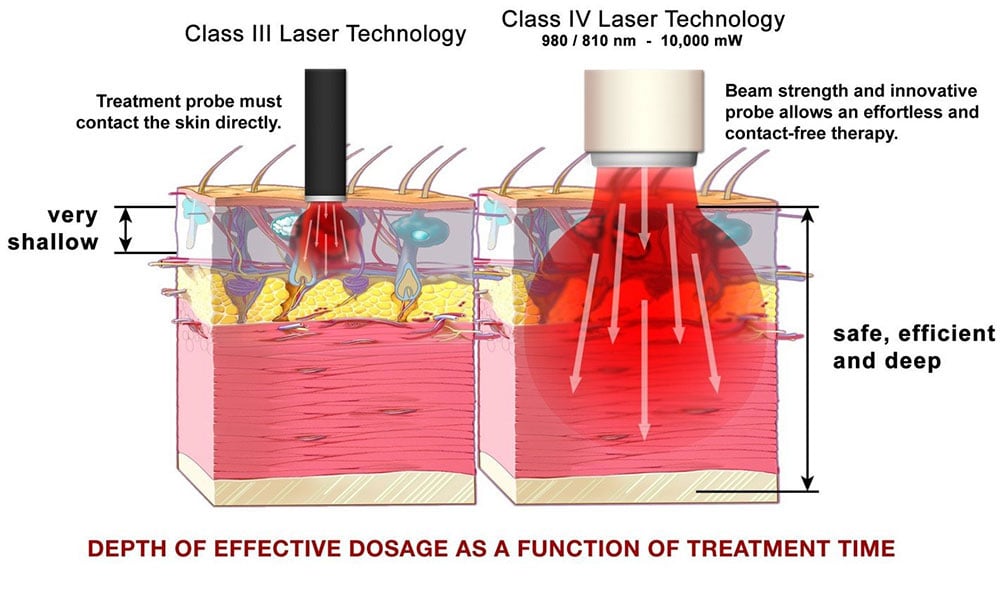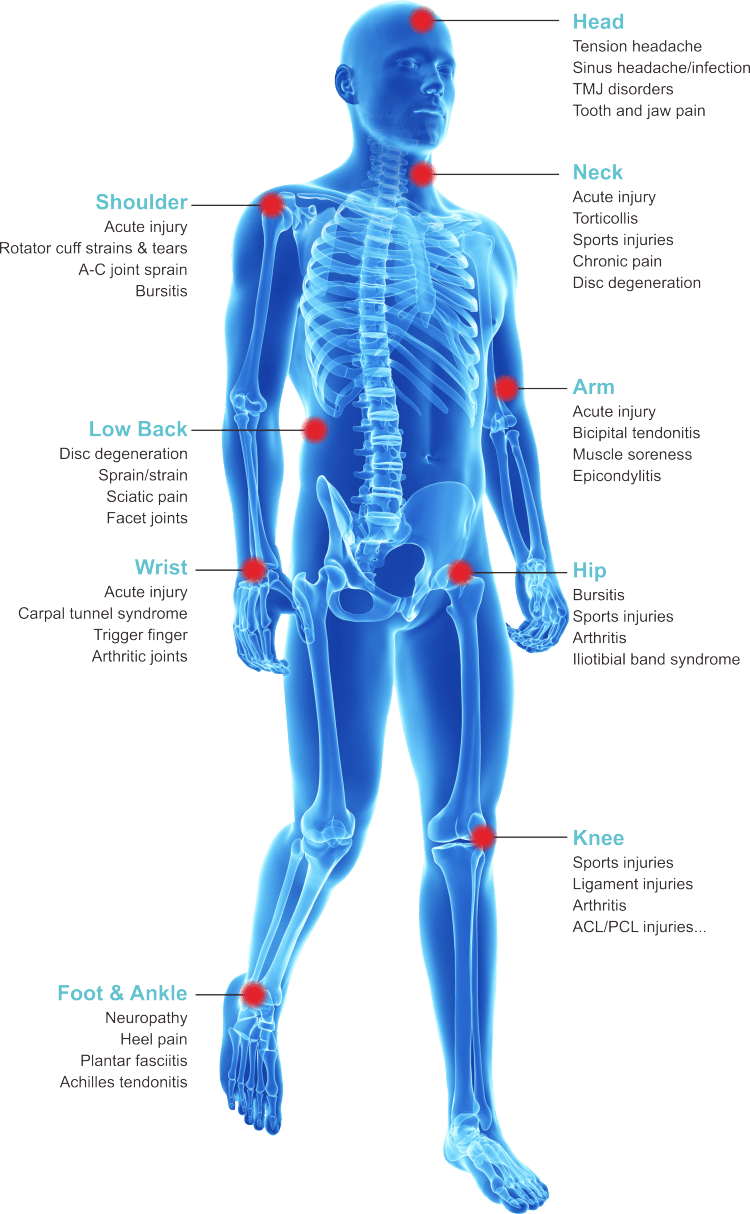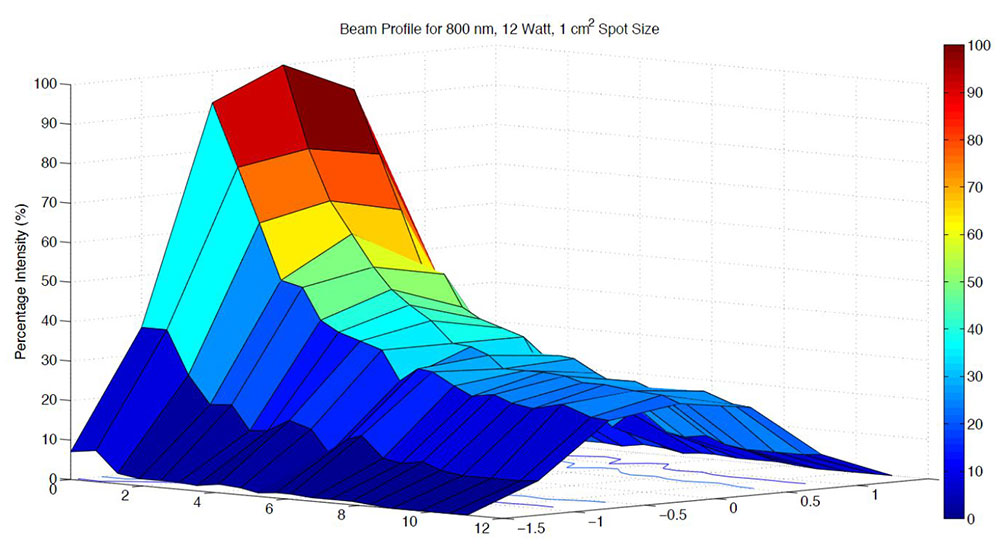High Power Class 4 Laser Therapy In Physiotherapy
Laser therapy is the non-invasive use of laser energy to generate a photochemical response in damaged or dysfunctional tissue. Laser therapy can alleviate pain, reduce inflammation, and accelerate recovery from a wide range of clinical conditions. Cleared by the FDA in 2003, Class lV laser therapy has become the standard of care for many musculoskeletal injuries.
Dimed diode laser system optimizes and promotes the healing process by stimulating multiple levels of tissue regeneration mechanisms. Under the stimulation of different wavelength laser light, the local increase of reactive oxygen species is repaired by generating additional ATP, thereby accelerating the metabolism of the cells and repairing the biological functions of the damaged cells. During the laser therapy process, Dimedlasers provide a warm and soothing feeling to the patients.

Laser therapy light is infrared electromagnetic energy entering the body as photons. The light beam of photons stays fairly narrow and does not diverge like a regular light bulb. The amount and depth of penetration from this photonic energy depend on several different factors related to the patient and the power of the laser therapy machine. The single wavelength, continuous wave, and high output lasers are the most powerful.
Research shows tissues targeted by High Power Laser Therapy are stimulated to increase the production of a cellular enzyme (Cytochrome C Oxidase) that is critical to the production of ATP. ATP is the currency of chemical energy in living cells. With increased ATP production and thus greater cellular energy, a host of biological responses are facilitated, such as pain medication, inflammation reduction, scar tissue, increased cell metabolism, improved vascular activity, and accelerated healing. This is the photochemical effect of High Power Laser Therapy.
Dimed laser physiotherapy machine is powered by a 60.0 Watt GaAlAs Diode Laser, one of the most powerful available, emitting a continuous wave at 980nm (near infra-red wavelength) for maximum bio-stimulation. This is a powerful, non-addictive, and side-effect-free form of pain management that decreases inflammation and scar tissue formation. These therapeutic qualities enable laser therapy to accelerate wound healing and reduce injury recovery time.
Class IV Therapy Laser for Human
Dimed Class lV therapy laser has adjustable 15-30mm physiotherapy heads and bio-stimulation heads. Moreover, optional glass ball heads can be pressed on the skin, high power can deliver more energy dose into deep tissue. Very effective for the conditions:
- Arthritis
- Bone spurs
- Plantar Fascitis
- Tennis Elbow (Lateral Epicondylitis)
- Golfers Elbow (Medial Epicondylitis)
- Rotator Cuff Strains and Tears
- DeQuervains Tenosynovitis
- TMJ
- Herniated Discs
- Tendinosis; Tendinitis
- Enthesopathy
- Stress Fractures
- Shin Splints
- Runners Knee (Patellofemoral Pain Syndrome)
- Carpal Tunnel Syndrome
- Ligament Tears
- Sciatica
- Bunions
- Hip Discomfort
- Neck Ache
- Back Pain
- Muscle Strains
- Joint Sprains
- Achilles Tendinitis
- Nerve Conditions
- Healing After Surgery

Biological Effects of Laser Therapy
Cold Vs Hot Therapeutic Laser
The majority of therapeutic laser equipment used is commonly known as “cold lasers”. These lasers have very low power and for that reason do not generate any heat on the skin. Treatment with these lasers is known as “Low-Level Laser Therapy” (LLLT).
The lasers we use are “hot lasers”. These lasers are much more powerful than cold lasers normally more than 100x more powerful. Therapy with these lasers feels warm and soothing because of the higher energy. This therapy is known as “High-Intensity Laser Therapy” (HILT).
Both hot and cold lasers have similar depths of penetration into the body. The depth of penetration is determined by the wavelength of light and not the power. The difference between the two is the time it takes to deliver a therapeutic dose. A 15-watt hot laser will treat an arthritic knee to the point of pain relief, in about 10 minutes. A 150-milliwatt cold laser would take over 16 hours to deliver the same dose.
Why Is Laser Power So Important?
If wavelength determines a laser energy’s depth of penetration then power determines itssaturation at the targeted depth. lt would be a mistake to consider one without the other. Power (Watts) is the number of photons of radiation you can deliver per unit time. The energy deposited (Joules)is the accumulation of these photons over time (1 Watt=1 Joule per second). By starting out with more Watts at the surface, more will penetrate to the desired depth.
For an illustration, consider the following:
- 1 Watt laser: 40 seconds to deliver 10 Joulesof energy to a 4cm depth
- 4 Watt laser: 10 seconds to deliver 10 Joulesof energy to a 4cm depth
The higher-powered laser will be able to deliver therapeutic doses to deeper targets in a shorter amount of time.
Clinical Advantages of Laser Therapy
- Easy non-invasive treatment
- No drug intervention
- Effective pain relief for patients
- Enhanced anti-inflammatory effect
- Decreased swelling
- Accelerated tissue repair and cell growth
- Improved local blood circulation
- Improved nerve function
- Shorten treatment time and long-lasting effect
- No known effects, safe


